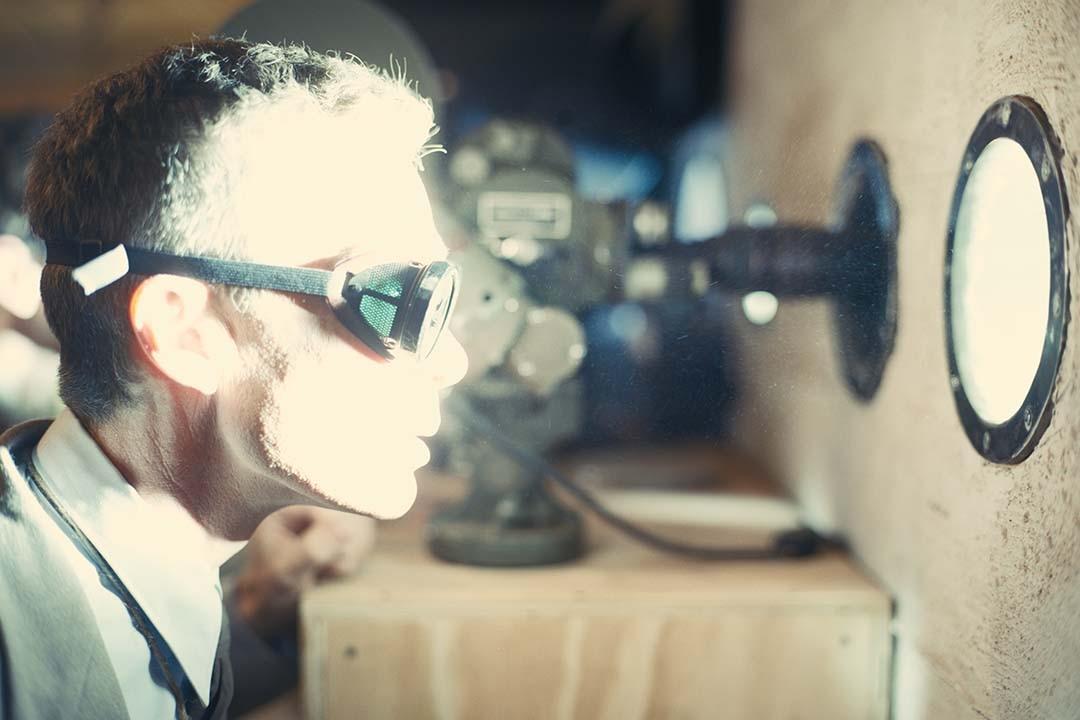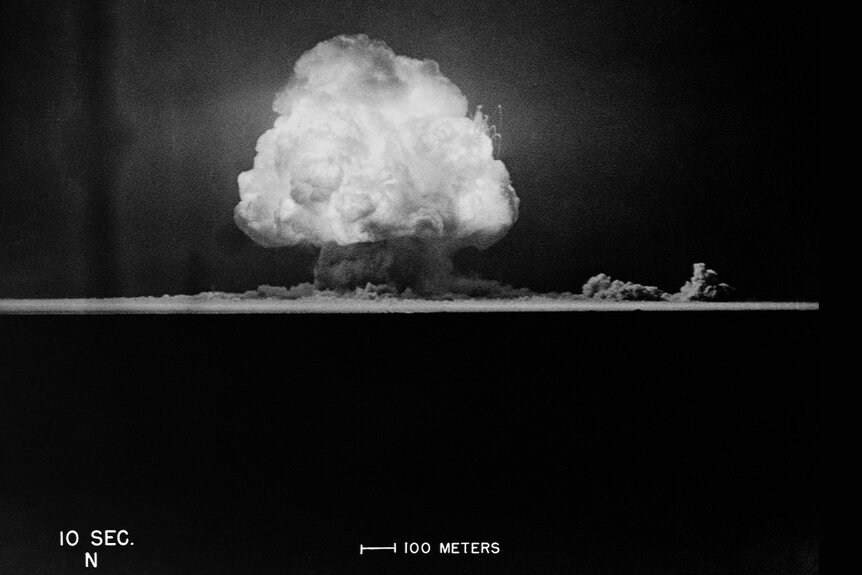Create a free profile to get unlimited access to exclusive videos, sweepstakes, and more!
The Science Behind Oppenheimer’s A-Bomb Explained
They can blow up anything, even your mind.

Christopher Nolan’s upcoming biopic Oppenheimer tells the story of the titular physicist who became known as the “father of the atomic bomb.” Under Oppenheimer's leadership, a small group of 20th century scientists created a weapon so deadly it rivals the power of science fiction doomsday devices. And they did it in an appropriately sci-fi fashion, by splitting the atom.
The Explosive Power of the Atom
As is so often the case, we can trace the atomic bomb back to Albert Einstein, it’s right inside his most famous equation. A small part of his work determined that energy is equivalent to mass times the speed of light squared. In other words, E = MC2. The bottom line is that there is an equivalence between mass and energy. If you could convert a chunk of matter rapidly into energy, you might be able to capture that energy in a nuclear reactor or create the most powerful class of weapon of all time.
RELATED: Could Oppenheimer’s Atomic Bomb Really Have Destroyed the World?
The thing is, most matter wants to stay matter, so scientists had to go fishing for a special kind of stuff. They found it in uranium and plutonium. More specifically, they found it in the isotopes uranium-235 and plutonium-239.
In the context of nuclear reactions, uranium-235 is like a balloon filled almost to its breaking point. A single additional puff of air, maybe even a gentle nudge from a passerby, is enough for it to pop. For an atom of uranium-235, that gentle nudge comes from a neutron and pushes the uranium over the edge. When it pops, it splits into two new atoms, each with about half as many protons and neutrons. It also releases a couple of free neutrons and an incredible amount of energy.
What Is Critical Mass?
You might have noticed that neutrons are the beginning and end of the process. You get your hands on a fissionable atom, toss a neutron at it, and you get two smaller atoms, some energy, and a few neutrons out the other side. If there aren’t any other fissionable materials nearby, that’s the end of the process. Getting a whole bunch of fission to happen all at the same time was a particular challenge for the physicists of the Manhattan Project. If fission began too early or happened too slowly, it would have dramatically reduced the power of the explosion.
If you want a bigger boom, you want to split atoms over and over again, releasing a tremendous amount of energy all at once. One way to do that is to make the neutrons work for you. When your first atom splits and releases neutrons, you want those neutrons to hit another atom and so on, in a chain reaction. The trouble is, you can’t control where the neutrons go, you can only push the probabilities in your favor.
To ensure a chain reaction occurs, atomic weapons are equipped with enough fissionable materials in a dense enough concentration that each new neutron formed will, on average, strike another nucleus. Having enough material to ensure that happens is called having a critical mass.
How to Enrich Uranium
The mere mention of uranium is enough to give you the willies, but not all atoms of uranium are created equally, even if they do share a first name. The number that comes after an element tells you which isotope you’re dealing with, and certain isotopes are better for certain activities.
Most of the uranium in the world, more than 99% in fact, is uranium-238 and it sucks for fission. It won’t split unless you hit it with a high energy neutron. If the neutron isn’t fast enough, the atom captures it and becomes uranium-239, which then decays into plutonium-239. The slightly lighter uranium-235 is great for fission but it’s extremely rare.
RELATED: Oppenheimer First Reactions: Christopher Nolan's "Stunning" New Film Praised as A "Total Knockout"
In natural uranium ore, only about 0.7% is uranium-235, or roughly one out of every 139 atoms. To get enough, scientists had to find ways to sort the 235 out from the rest of the material in a process known as enrichment. Because it’s chemically identical to more common uranium-238, it couldn’t be separated with conventional chemical methods and physicists at the Manhattan Project had to get creative. Ultimately, they pursued several methods including centrifuges, gaseous diffusion, thermal diffusion, and electromagnetic separation.
How the Atomic Bombs Worked
To date, only two atomic bombs have ever been detonated in a live setting. While Little Boy and Fat Man were dropped only a few days apart, they relied on dramatically different mechanisms.
Little Boy had two separate pieces of uranium, each too small to achieve critical mass, which were kept in isolation until nearly the last moment. When the bomb was ready to detonate, both pieces were slammed together using something similar to a conventional gun. One piece of uranium was fired down a smooth-bore gun barrel and smashed into the other piece. When they came together, they achieved a critical mass and generated a nuclear explosion.
Fat Man, by contrast, used less reactive plutonium-239. When the sample arrived, it was less pure than expected and physicists realized the gun method wouldn’t work. Fission would have started early, triggering a slow reaction which never reached a critical state. Physicists needed another solution.
In the guts of Fat Man was a hollow sphere of subcritical plutonium. That sphere was surrounded by another sphere of conventional explosives. Several detonators triggered at the same time, creating a powerful implosion inside the bomb. The density of the plutonium increased as it was all smashed together and it achieved a supercritical state.
With any luck, the only mushroom clouds we’ll ever witness will be on a movie screen.
Oppenheimer hits theaters July 21, 2023. Get your tickets now!




























